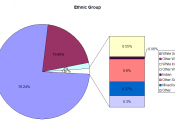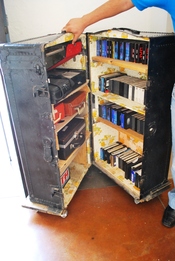The Reliability of Eyewitness Testimony
Eyewitness testimony has been used frequently over time in various situations. It sometimes holds more merit then some facts or evidence. Yet it is also the reason why many innocent people go to jail and criminals still walk free.
Eyewitness testimony has been used for over 100 years. It has played a major part in convicting criminals, from the common thief to the most dangerous murderer. However, even with a long incubation time like that it wasn't really recognized until the 1970's. With plenty of unsolved crimes and not enough evidence eyewitness testimony was all that was needed. Now with psychologist holding scientific studies to see if it is really reliable the legal jurisdiction try to pay more attention to the specific details. Through many studies it has been shown how the accuracy of the reports given can be altered by the ethnicity of the person and their current emotional state.
It is believed that if a weapon is used in the crime that is witnessed then the eyewitness might become aroused impairing their judgment (Wagstaff, Macveigh, Boston, Scott, Brunas-Wagstaff, &Cole 2003).
METHOD
Wagstaff, &et conducted a test study with 70 witnesses (62 women, 11 men) to see how accurate they could remember what the person looked like and what kind of weapon that was used. The witnesses were asked to write down what the person looked like. Kebbel, Wagstaff, &Covey, also did a study where they tested 51 people (37 women, 14 males). They had the group watch a tape then answer questions ranging from easy to med in the first set, and in the next set from easy to hard. Lindholm & Christianson (1998) feel that emotion and group status play a part in the eyewitness testimony. They believe that one ethnic group will accept plus feel more comfortable that someone outside of their ethnic group committed a crime and pick them out of a line up then someone from their own ethnic group. They showed a group of Swedes and a group of immigrant's two tapes of a fake robbery, but they didn't tell them it was fake. In the videos they switched the perpetrator to match the ethnic groups of the two selected groups of people. When they finished watching the tapes they were told to answer some questions, and then rated their response. Yet, Wagstaff also believed that in the face of danger a person might get aroused, in doing so it could impair their judgment on what they saw. If you applied the mnemonic ADVOKATE (see box) to an eyewitness testimony you would be able to come up with a more accurate story.
Box for ADVOKATE
*Amount of time for which the event was observed (the longer the better).
*Distance the event was witnessed (the shorter the better).
*Visibility
*Obstruction between the witness and event (the less the better.
*Known as seen before (if the witness knows the person)
*Any reason to remember
*Time lapsed between the event and the witnesses recollection (longer lapse, worse the memory)
*Errors or material discrepancies.
(Wagstaff, 2002)
Results
Lindholm & Christianson research showed that the groups could believe someone outside of their group would commit the crime, before anyone in their ethnic group would, and that the tape with the person from their ethnic group committing the crimes was not real. Kebbel, Wagstaff, &Covey results showed that even though the groups were very confident in their answers most were very wrong in what they thought thy saw. They believed to recall what color the perpetrators hair, eyes, clothes, race, and sex, but they could not recall age, height, and build. Wagstaff alone showed how when faced with a weapon and a long incubation time that the witness may not be able to recall exactly how the event took place.
It comes to show from reading their research that ethnic grouping and a lot of confidence plays a part in what you remember and what did happen. Whether you get aroused while the crime is happen or just plan forget. It is still easy for eyewitness testimony to not give accurate results to what really happened. In conclusion eyewitness testimony is not reliable at all, for what someone really saw will not come out that way do to how they might feel or if they had a lot on their minds. Facts can still get jumbled and misplaced leaving them to think one thing when it really happened completely differently. Eyewitness testimony should not be used on a basis to try someone for a crime. When the justice system can take a big risk of convicting the wrong person. More research needs to be done before eyewitness testimony should be considered as reliable evidence for a crime.
Donetta Taylor
psycology 1010
spring 2003


